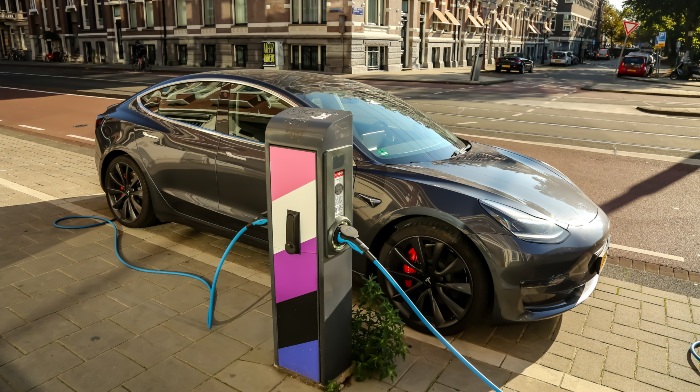
Lean, green, money-making machines: A comparative breakdown of the financial benefits of bicycle ownership
According to a recent study, the total running cost of a car can be nearly €13,000 per year. Using similar parameters, ECF’s Ceri Woolsgrove breaks down how much money can potentially be saved by switching to a bicycle instead.
I recently came across an interesting article in the scientific journal, Ecological Economics, which looks at the total costs of owning a car. Focusing on Germany as a case study, “The lifetime cost of driving a car” analyses the private and social costs of car ownership, concluding that the overall costs are often grossly underestimated by most car owners. In fact, the results are staggering.
The study shows that for a small Opel Corsa, the annual estimated cost for the owner is €6,704, while a medium-sized VW Golf costs €7,657. However, each of these pales in comparison when compared to a Mercedes SUV, whose estimated ownership costs comes in at a whopping €12,899 per year.
The social costs for these cars (which we all pay for, by the way) ranges from between €4,674 to €5,273 after charges, taxes and fees are factored in.
Thus, the results show that the total private and social cost of car ownership can range from €11,378 to €18,171 per year for each vehicle.

Graphic 1: Annual cost of car ownership (Source: Gössling, S. et al; 2022)
If only there was a cheaper, greener alternative…
With the article presenting lots of juicy figures to play around with, I thought it would be interesting to crunch the numbers on how much a regular bicycle would cost using the same parameters. Using the latest figures from the Confederation of the European Bicycle Industry (CONEBI) and TRAXIO on the average cost of a new bicycle in Belgium, an initial, conservative estimate produced the following calculations: a €985 bicycle with €250 additional equipment, €150 yearly maintenance, €50 insurance, and €30 for safe parking accumulates to €2,385 over five years.
Thus, with approximately €480 annual private costs, my non-peer-reviewed conclusion is that, even when using conservative assumptions about bicycle prices and life cycles, private ownership of a bicycle can be 14 times cheaper than owning an Opel Corsa and 27 times cheaper than a Mercedes SUV. For cheaper bicycles and longer operating lives, the difference will be of course even bigger. So far, so good!
However, social costs are a bit more difficult to compare. This is because bicycles, unlike cars, mainly bring external benefits as opposed to costs, both for society and for the environment. In a previous study, the European Cyclists’ Federation (ECF) calculated that across the EU, the external benefits of cycling can be quantified at around €93 billion per year.
In comparison, a study published in 2019 by the European Commission estimated the gross external costs, ie the costs for the environment, health and mobility, of motorised road transport at €820 billion per year. Obviously, for every car trip that is replaced with a bike trip, the external costs of motorised transport will go down, and the external benefits of cycling will increase – one more reason to start pedalling!
Is electrification really the future?
But what about electric cars, I hear you say. Surely they will bring down private ownership costs and also lessen the impact on the environment, resulting in lower social costs? Though the study doesn’t specifically address electric vehicles, perhaps we can speculate again with another rough estimate.
The study includes parameters for average private costs. Here are those for the Mercedes SUV per kilometre:
- Vehicle depreciation: €0.472
- Operating cost: €0.097
- Fixed costs: €0.118
- Repairs and maintenance: €0.077
- Other:
- Parking: €0.051
- Congestion: €0.037
For an electric car, operating costs may be lower than for an Internal Combustion Engine (ICE) vehicle due to less reliance on fuel and there may be relief for some of the fixed costs as well, such as taxes. But even if we were to take these operating and fixed costs as little as zero, there would only be a reduction of around 25% in average private costs. That means an electric SUV would still cost private owners nearly €10,000 a year, which is still a supremely expensive way to get around.

Graphic 2: Example of expensive charging infrastructure required for electric cars (Source: unsplash.com)
Calculating the social cost of electric vehicles
The study also shows social costs by vehicle, using following figures for social costs per kilometre:
- Health costs:
- Crashes: €0.005
- Air pollution: €0.1
- Noise: €0.008
- Infrastructure
- Built infrastructure: €0.096
- Maintenance: €0.002
- Barrier effects to other users: €0.015
- Curbside parking: €0.067
- Vehicle manufacture and transport resource requirements: €0.006
- Subsidies & environmental costs
- Subsidies: €0.003
- German CO2 tax deficit: €0.05 per km
Perhaps we can recalculate this to take an educated guess and see what would happen if electric cars replaced ICE cars. Electric vehicles would likely reduce the costs of air pollution, one of the major problems of ICE automobility (though tyres and brake pads also emit dangerous particulates). However, they could increase infrastructure costs with the implementation of charging stations and stops.
There could also be an increase in the resource requirements for creating the batteries. If we reduce air pollution to zero (though hugely exaggerated given the problems with particulates, e.g. from wear of the tires) and do not touch the other figures (even though infra costs could be higher), my rough-estimate calculations could see a possible improvement again of around 25% - 33% of the social costs (find the Appendix of supplementary data here). Ultimately, this could still mean a social cost of around €4,000 - 3,500 for an electric SUV.
Therefore, the total private and social cost of an electric SUV comes to approximately €14,000. However, one final caveat, a reduction in running costs of electric cars could also lead to a rebound effect and lead to more motorised private vehicles on the roads, therefore more cost.
So, should we really be seeing private motorised vehicles as the role model for overcoming our urban transport problems? Electrification of motorised transport is certainly a tool to reduce our CO2 emissions and, as we are currently worsening the world’s climate conditions, any tool is important. But there are far more efficient opportunities to be explored in this ecological transition, particularly in how we get around.
Encouraging signs from the EU
It was interesting to read the European Commission’s communication on the Urban Mobility Framework that was released a couple of weeks ago. For the first time in my own recent memory, an official Commission document has given priority to walking, cycling, and public transport, mentioning that a “clear priority should be placed at national and local level on the development of public transport, walking and cycling, as well as connected, shared mobility services.” It also states that while “multimodality should be our guiding principles for urban mobility, zero-emission and connected and automated mobility will be a key component of the transition to a climate-neutral urban future…”
This reference to automated vehicles and electric cars being second priority to walking, cycling and public transport is a major step in the right direction, and it is on this premise that ECF is continuously working to ensure that actions will be as loud as words from European policymakers in the coming years.
Regions:
Contact the author
Recent news!
Upcoming events
Contact Us
Avenue des Arts, 7-8
Postal address: Rue de la Charité, 22
1210 Brussels, Belgium









